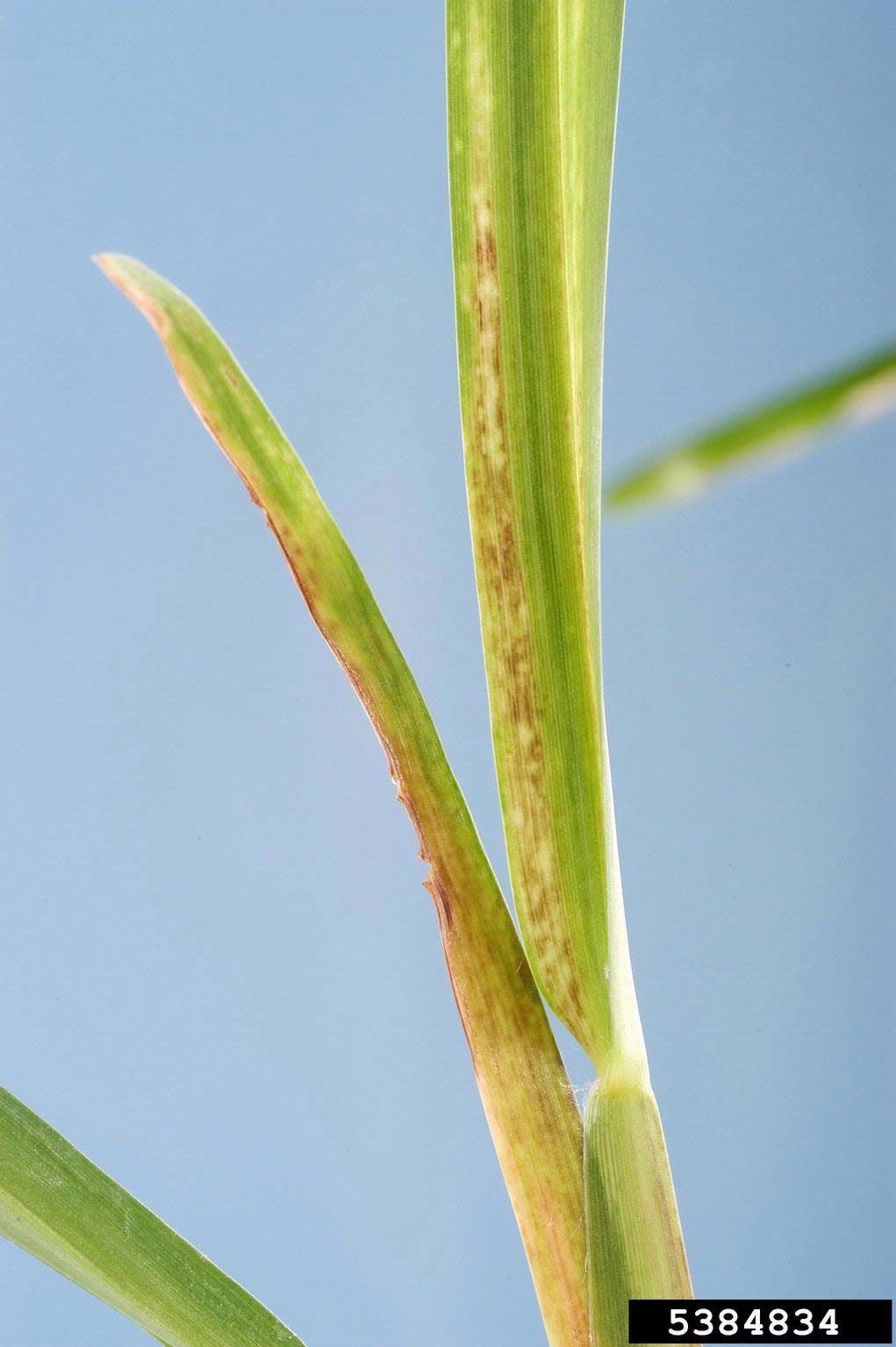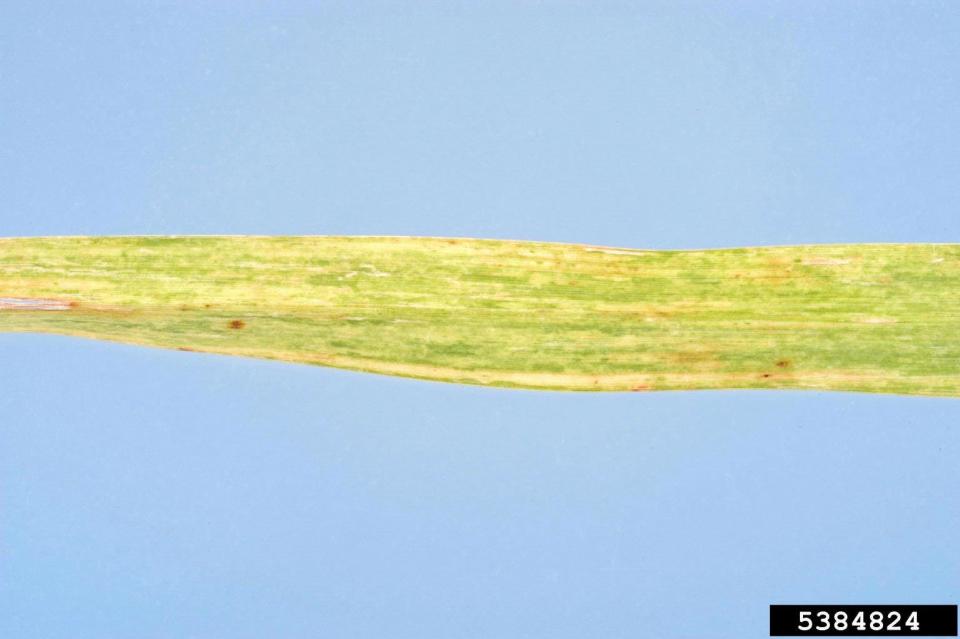Lethal Viral Necrosis: What you should know about the grass-killing virus new to Northeast Florida

You may be aware of the common pests and pathogens that harm our St. Augustine grass lawns on an annual basis such as take-all root rot (Gaeumannomyces graminis var. Graminis), large patch fungus (Rhizoctonia solani), southern chinch bugs (Blissus insularis) and tropical sod webworms (Herpetogramma phaeopteralis). Now, not only do we have to deal with those pests, but we should also beware that there is a virus that attacks our most common turfgrass species too.
Lethal Viral Necrosis (LVN) is a deadly form of the Sugarcane Mosaic Virus (SCMV) that can kill St. Augustine grass.
The virus has been reported in other grass species, but the susceptibility of other turfgrass varieties is currently unknown. It is currently only a concern in St. Augustine grass. Floratam, a commonly used cultivar of St. Augustine grass, has been reported as the least resistant cultivar to this disease.
How to stop the spread of Lethal Viral Necrosis
Once turf is infected there is no cure. Pesticides, fertilizers and other inputs are ineffective and can't stop the spread or development of the disease. The only method of control is to reduce the spread of the virus by sanitizing equipment and keeping infected material on infected sites.
To sanitize equipment, remove plant material from equipment before moving to another lawn, and then spray down parts of equipment and worker's shoes that have the potential to transfer plant sap using dilute bleach, quaternary ammonia (Green-Shield), alcohol, or another sanitizing agent according to the directions.
If you are mowing your own lawn, mow healthy areas of your lawn before infected areas and sanitize after mowing. If you are mowing multiple lawns where the virus is known to occur, mow healthy-looking lawns before those with mosaic symptoms, and avoid mowing symptomatic lawns when the turfgrass canopy is wet (avoid mowing when dew, irrigation, or rainfall persists). Avoid purchasing infected plant material. If turf is infected and dies, replace dead sod with non-Floratam varieties that are more resistant to this pathogen. Avoid additional stressors on your turf by following the best management practices listed here: edis.ifas.ufl.edu/publication/LH010. For more information on SCMV in St. Augustine grass go to: edis.ifas.ufl.edu/publication/PP313. To confirm the virus and other diseases, submit a sample to a UF/IFAS Plant Diagnostic Center. Instructions for collection and submission can be found on their website: plantpath.ifas.ufl.edu/extension/plant-diagnostic-center.

Lethal form of Sugarcane Mosaic Virus now found in North Florida
The Sugarcane Mosaic Virus (SCMV), also called Mosaic disease, has been in Florida since the 1960s. The virus was first found in sugarcane. This disease affects different species of grass.
The disease symptoms appear as streaky patterns of yellow and green on the leaf blades. The mosaic patterns can vary depending on the severity of infection and the plant species being attacked.
Before 2013, there were no reports of St. Augustine grass death from the virus, only the streaky appearance was reported. Then in 2013, new symptoms of plant death and necrosis were reported to have developed. This development was called Lethal Viral Necrosis (LVN).
Previously this was only an issue in South Florida, now positive samples have been identified in North Florida. Symptoms are most visible in the fall and winter months when the turf begins to go dormant. Some nutrient deficiencies such as nitrogen, can cause the turf to have a similar yellowing appearance. However, in the nitrogen deficiency, the yellowing area follows the vein in a line, whereas SCMV causes broken lines with a mosaic-like pattern.
SCMV can be spread by mechanical vectors such as mowers, trimmers, and other lawn equipment. The virus is also spread by insect vectors, but their importance is currently unknown. Anything that can transfer grass clippings or sap containing the virus from lawn to lawn can be a vector. Stop the spread.
George Richardson is a Commercial Horticulture Extension Agent with UF/IFAS Extension in Duval County.
This article originally appeared on Florida Times-Union: Lethal Viral Necrosis: The virus killing St. Augustine grass in Florida

